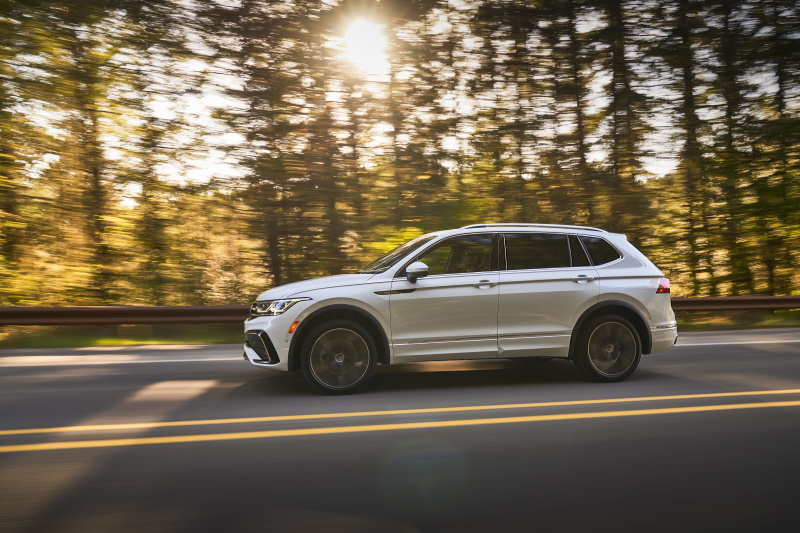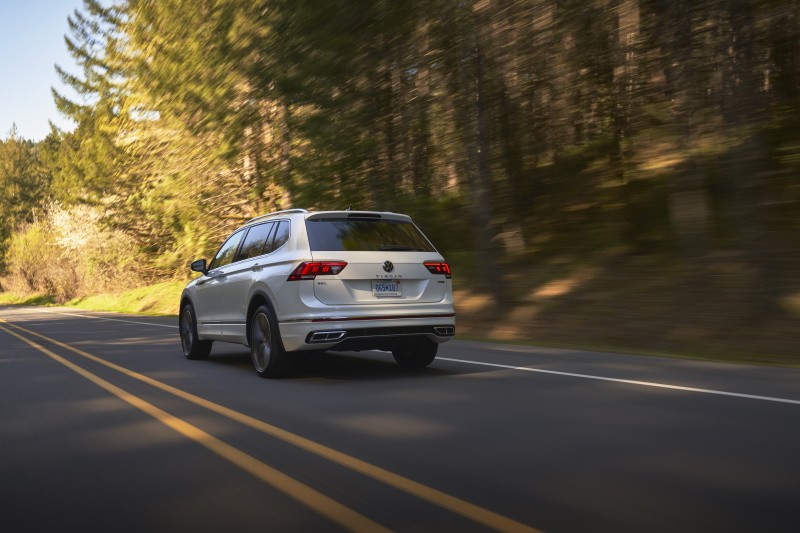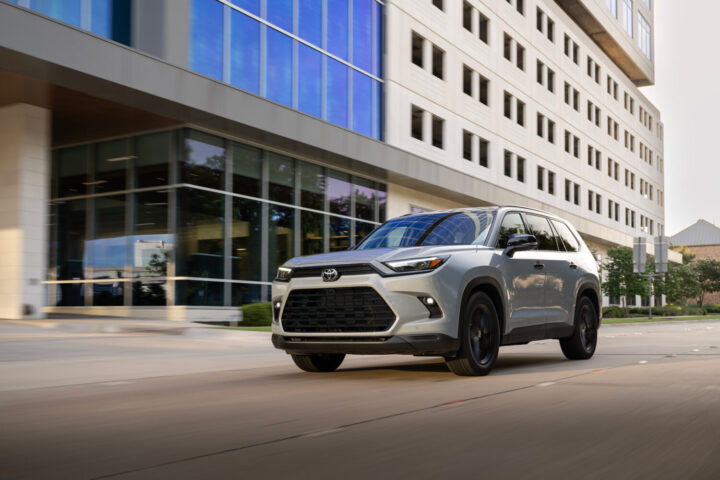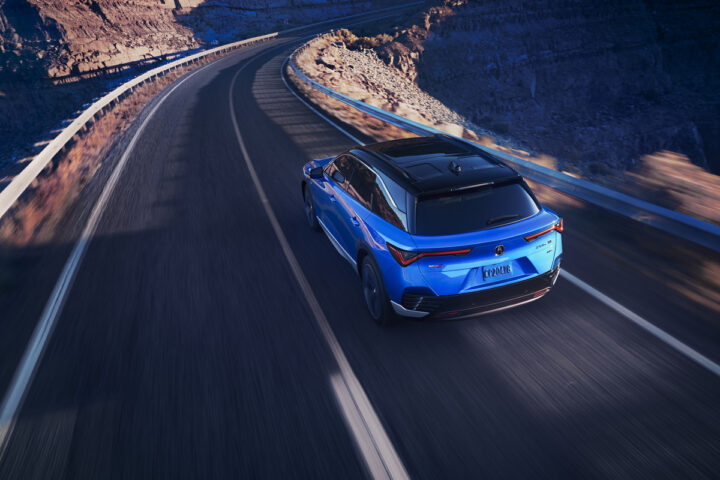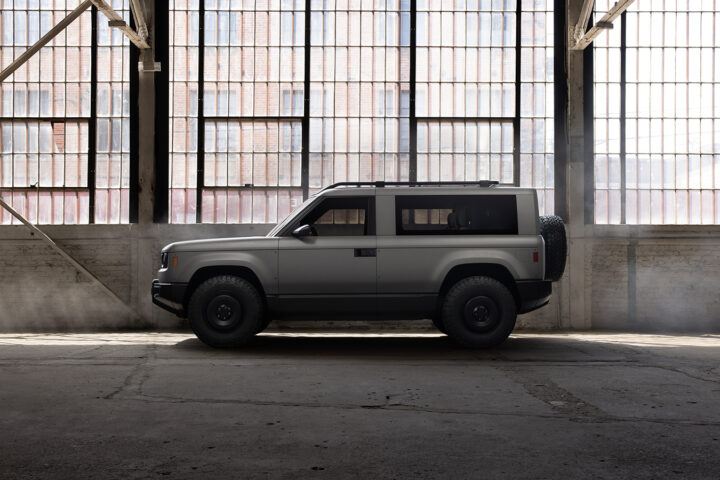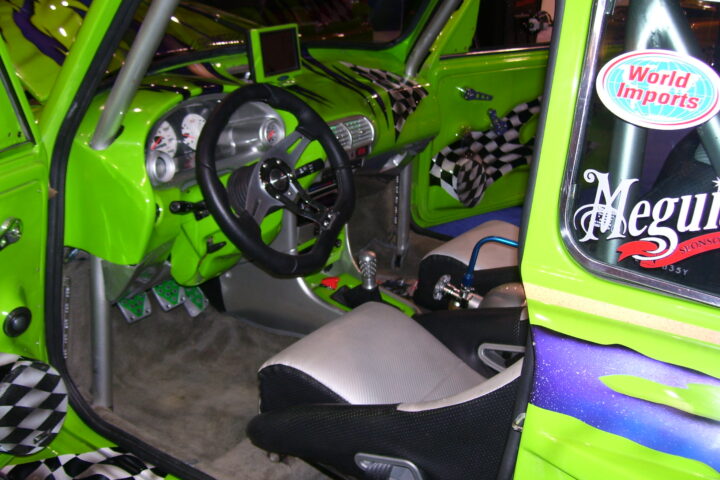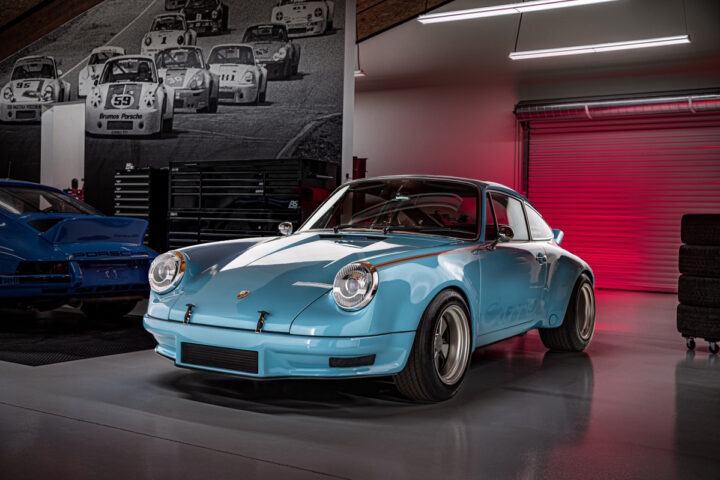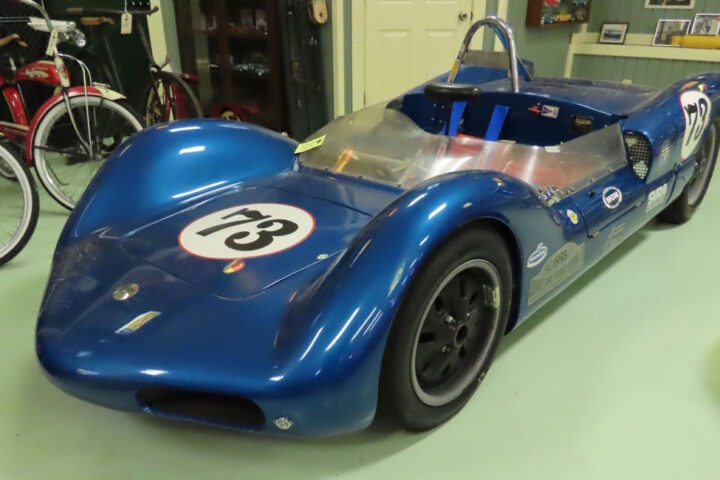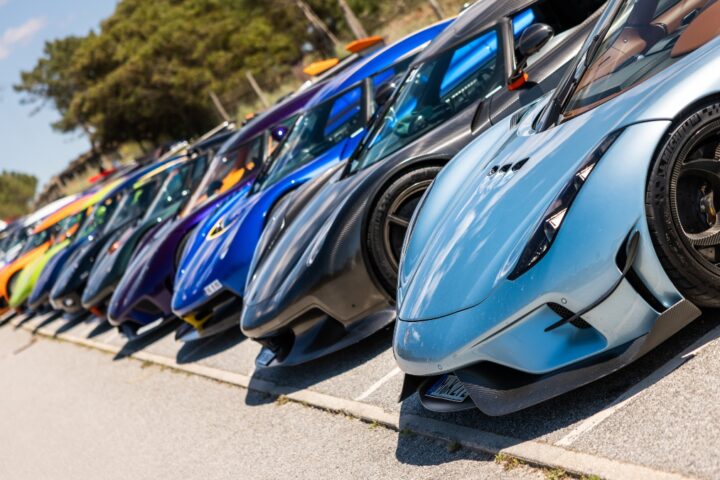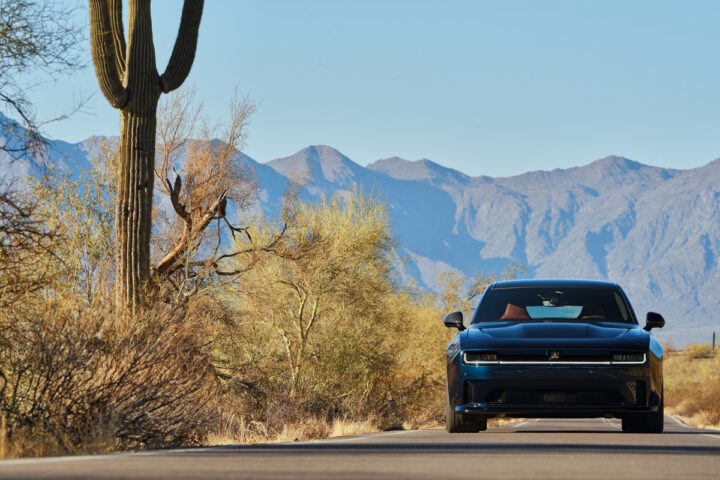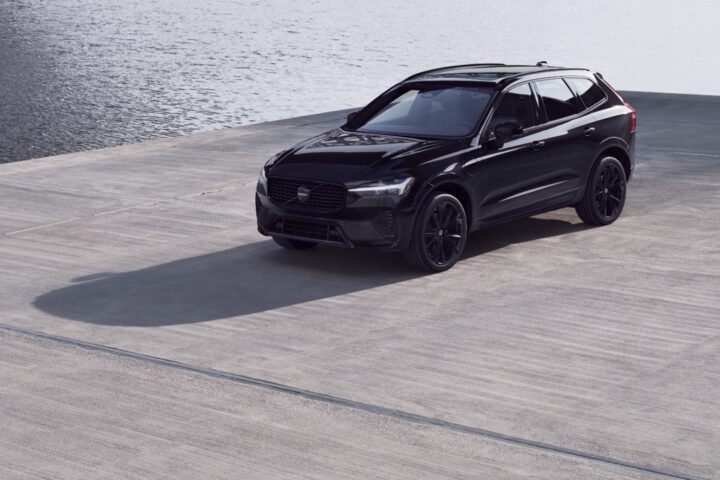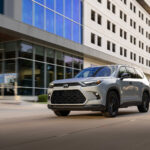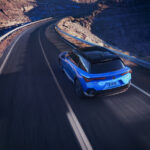Photos via Volkswagen –
If you are customizing a Volkswagen, ticking the “R-Line” version makes the Tiguan look bold, but there are a lot of fake vents. An example of this is the front-end. The chrome grill integrates well with the lights while the rest of the trim is black. As I said, there are fake vents, but it’s style over substance. Going to the side, this SEL R-Line gets some massive 20-inch alloy wheels. These look great alongside the Atlantic Blue Metallic paint. Head to the back and you’ll see a very deep rear window along with the VW logo and Tiguan in the center of the tailgate. Finally, there are some cheap-looking fake exhaust tips.
When you get in, you’ll see a nice leather interior and a contrasting brown steering wheel. Like the ID.4, the Tiguan has haptic-feedback and capacitive buttons on the steering wheel. At first, it’s quite annoying, but if you’re patient, you can control them. Those button and swiping buttons are for the adaptive cruise control and media. Looking ahead is Volkswagen’s digital screen, and it has some good configurations. Moving to the right, you’ll see that the materials are generally of good quality. This Tiguan had Volkswagen’s standard infotainment system with capacitive buttons for media, navigation, and various settings. The problem with these is they are all behind piano-black plastic trim which smudges a lot.
If you worry about smudges, then this climate control isn’t for you. There is a good thing: there are “buttons” for the heated and ventilated seats. Unfortunately, like the climate control, these are all capacitive with haptic feedback. While driving, it was sometimes near impossible to adjust the fan speed since it has both a sliding and pressing function. It was the same thing with the heated and ventilated seats where the button just wouldn’t work. Other than my major gripe of the climate control, there’s your traditional automatic shifter and a dial for different drive modes. When you look at the trunk, you see just how big the Tiguan truly is.
Looking under the hood, you see something a little bit interesting. The engine is as large as the previous-generation Tiguan at two-liters, but the horsepower is down from 200 to 184-horsepower and 221 lb-ft. When combined with an eight-speed automatic and all-wheel-drive, the Tiguan gets from 0-60 MPH in a slow 9.1 seconds. There’s no other way to put it: it’s slow. Although that doesn’t mean it isn’t fun. The eight-speed auto was slow to respond and best used in Sport mode. There is a good amount of athleticism when you corner, but you can’t exactly accelerate quickly out of said corner. Daily driving-wise, the Tiguan was comfortable, especially with the heated seats and heated steering wheel.
Out on a cruise, the Tiguan has all the safety features you would want in your modern SUV including adaptive cruise control and lane-keep assist. All of this can be yours for $37,000. There aren’t any options since the SEL R-Design has everything you’d want. Does it have everything you need in an SUV? Of course. There are lower trim levels, but this fully loaded Tiguan feels like the right trim level to get. That’s because the Tiguan isn’t trying to be a performance SUV. If it was, it would fail miserably thanks to the decrease in horsepower. On the other hand, it did get 25 mpg which was quite acceptable.
When you compare the Volkswagen Tiguan to its competitors, there are a few advantages the Tiguan has. It has a more restrained Germanic look compared to the bolder Korean twins, including the Hyundai Tucson. Driving the Tiguan is quite enjoyable, and only the Mazda CX-5 beats it in the fun category. It also has that more calm personality and doesn’t care about being rushed. Is the 2022 Volkswagen Tiguan SEL R-Line worth looking into? I’d say so, just don’t let the lack of speed surprise you.

